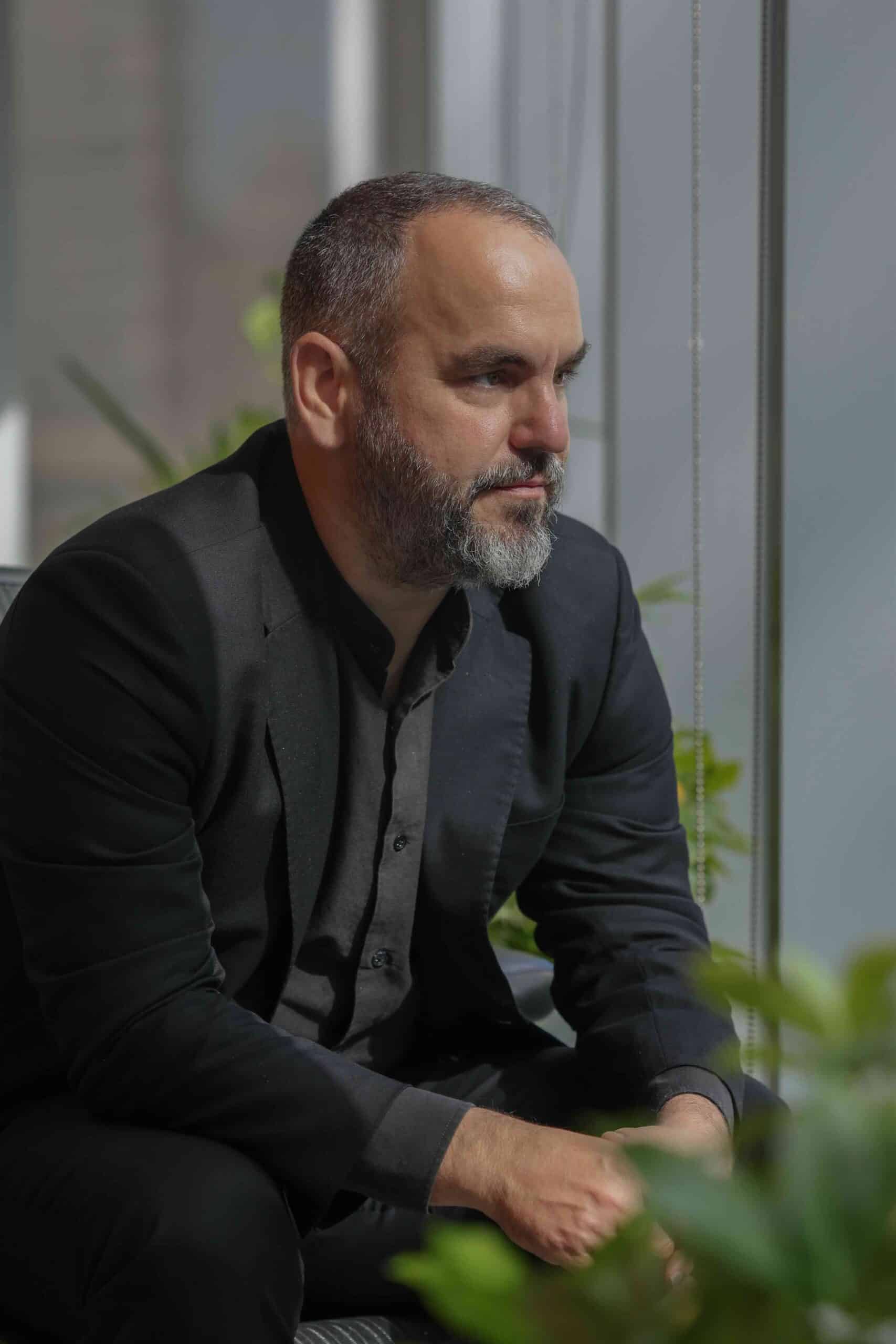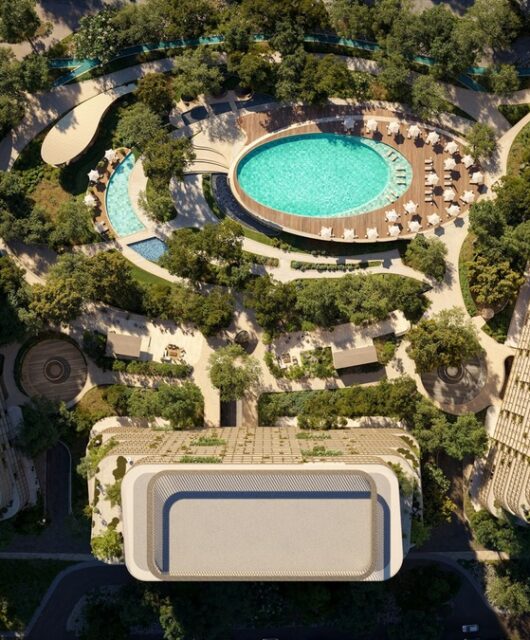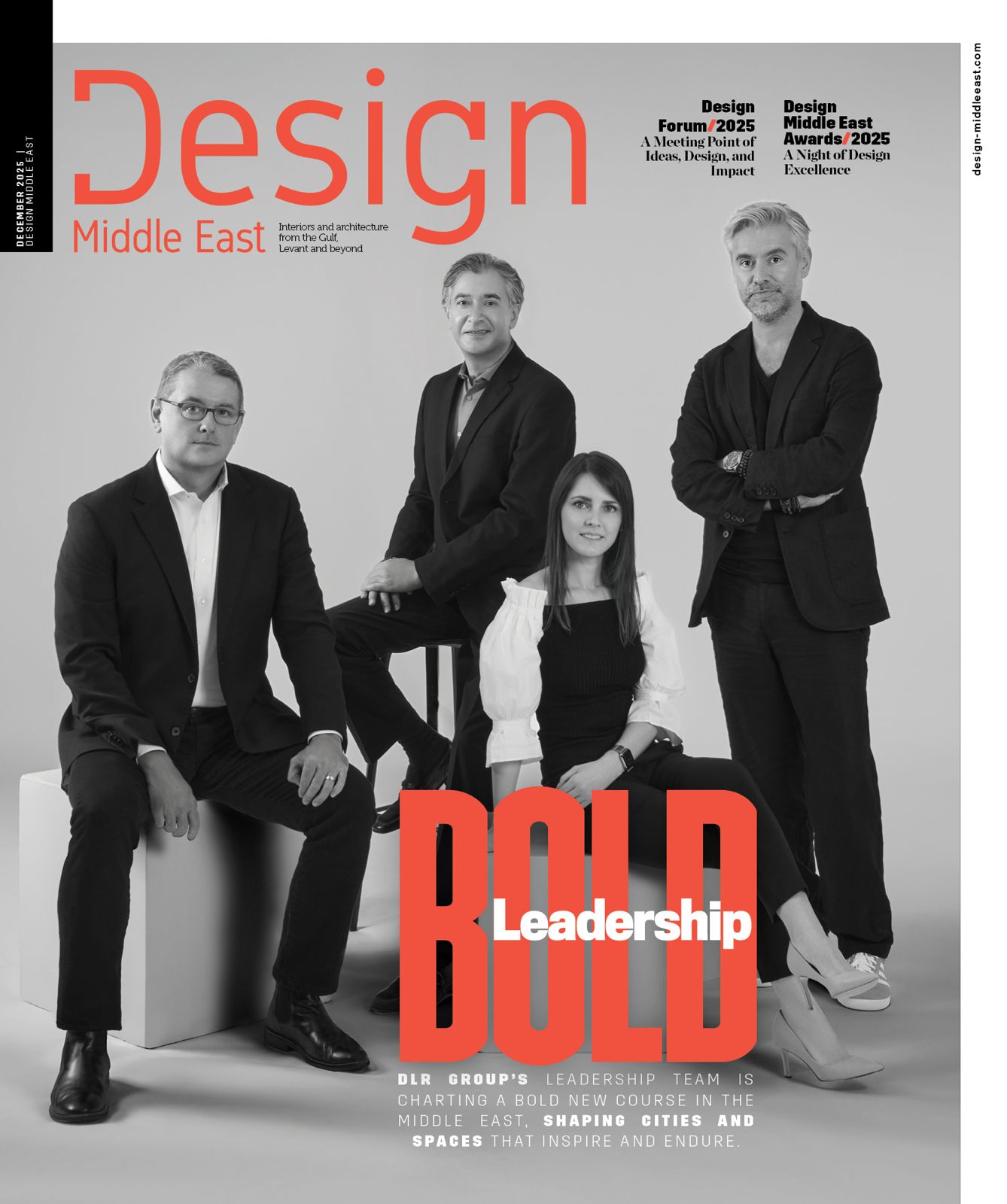Seeing Beyond the Present

Ignacio Gomez, Global Design Principal at Aedas, reflects on the transformative trends in architecture, emphasising the integration of sustainability, technology, and cultural authenticity. He expresses his excitement for Aedas’ role in advancing design and his pride in being part of a field that continually redefines what’s possible.
By Roma Arora
Meet Ignacio Gomez, a Global Design Principal at Aedas shaping spaces that connect the world while staying true to local cultures. With over two decades of architectural expertise, Ignacio has been a driving force in contributing to the Middle East’s architectural evolution since he made the region his home in 2006.
Ignacio’s passion for architecture took root at an incredibly young age, long before he even understood what it meant to be an architect. His father, involved in small real estate developments in their hometown, would often bring him along to meetings and site visits. Ignacio looks back in time and says: “As a child, I found offices and meeting rooms incredibly boring. But when my father took me to an architect’s studio, it was a revelation. The drawing boards, markers, and cool gadgets made it feel like a whole new world. I was amazed and thought, ‘These people have the coolest job—they get to draw all day!’ From that moment, I knew I wanted to be an architect.”
What started as childhood curiosity evolved into a lifelong passion, and once he became an established architect, there was no looking back. His career has since been marked by the successful completion of high-profile projects, including SLS Dubai Hotel & Residences, The Red Palace Boutique Hotel and Trojena Ski Village, amongst others.

From Challenge to Reality
Ignacio is truly amazed by how anything seems achievable in this region. Despite challenges such as tight timelines and evolving briefs, there is an exhilarating spirit that drives us to turn the seemingly impossible into reality. This dynamism is what distinguishes this region, infusing every project with an infectious energy and determination.
He makes reference to the development happening in the Middle East, including UAE and Saudi Arabia, mirroring other periods of intense growth. It’s similar to the architectural boom in New York during the 1920s-1930s when iconic skyscrapers reshaped the Manhattan skyline and pushed the boundaries of what was possible. Over the years, he has seen the region emerge as a contender, challenging limits through innovation and ambition. Today, the Middle East is showcasing the transformative power of visionary thinking, shifting the sources of inspiration.
He understands that architects encounter unique obstacles on a daily basis in a quickly increasing industry with ever-changing processes and communication. However, there is an indisputable sense of being at the centre of global activity—a feeling of hope and excitement generated by some of the world’s best minds. “We’re not simply developing buildings here; we’re also contributing to the region’s wider story of innovation and prosperity. Being engaged in such a dynamic ecosystem, where the bounds of potential are always extending and the future appears unlimited, is an incredible privilege”.
Innovation Meets Timeless Quality

Ignacio is renowned for his innovative approach, staying ahead of design trends while ensuring that projects retain a timeless quality. He achieves this by harmonising traditional elements with contemporary design, which requires a deep appreciation for both. “At Aedas, we delve into traditional architectural practices to shape our guidelines for the Middle East. Instead of replicating old designs, we focus on the core principles behind them, specific influences and adapting to local conditions. Traditional methods, such as determining room sizes by wood beam lengths and using sun-dried bricks, inspire us today. Despite having access to modern materials and technologies, we prioritize simplicity, logic and coherence. Our goal is to create contemporary designs that remain functional and true to their origins, avoiding unnecessary complexity while preserving a clear architectural vision,”
He emphasises that respecting regional culture is crucial in modern design and explains, “At Aedas, we embed ourselves in the local context by operating design studios within the regions we work in, encouraging the growth of local talent. Our team members are both skilled architects and deeply familiar with the local culture. This approach ensures our designs are truly reflective of and sensitive to their environment, unlike designs created from afar.”
Balancing Technology and Humanity

As the world becomes increasingly tech-savvy, Ignacio recognises that staying ahead requires mastering these advancements. At Aedas, he emphasizes that people drive innovation, with technology serving as a powerful tool. He advocates for leveraging technology effectively: “From generative design to AI, VR, and 3D printing, we use a range of technologies not just to automate tasks, but to integrate them seamlessly into our workflow. This approach enhances the design process and delivers exceptional value to our clients. It’s not the technology itself that makes a firm cutting-edge, but how we use it to encourage bold creativity and experimentation.” However, being tech-savvy doesn’t mean Ignacio overlooks the human aspect. He equally values how technology can improve the lives of team members, its primary users.
Key Trends Paving the Way for a Promising Future
He highlights key trends shaping the future of architecture, with emphasises on the integration of advanced technologies like AI and VR, which streamline design and enhance collaboration. Additionally, he notes the growing demand for culturally authentic designs that balance tradition with modernity.
There are several key trends shaping the future of architecture, with sustainability being one of the most significant. As environmental awareness grows, clients and communities increasingly demand buildings that are more eco-friendly and socially responsible. Clients and architects are focussing on using sustainable materials, incorporating energy-efficient systems, and designing for reduced environmental impact. This shift reflects a larger movement toward environmentally conscious development across industries.”
Another important trend that Ignacio refers to is the integration of advanced technology into architectural practice. Tools such as Building Information Modelling (BIM), virtual reality (VR), and parametric design are transforming the way architects design, visualise, and construct buildings.
He explains the inclusion of AI-driven design tools and algorithms is also revolutionising the field. AI can analyse vast amounts of data, provide design recommendations, and generate multiple design options. This technology allows architects to streamline workflows, optimize designs for efficiency and sustainability, and collaborate more effectively with clients and other stakeholders. By embracing AI, architects can deliver more innovative and customised solutions.
Lastly, one of Ignacio’s favoured trends, is the growing emphasis on cultural identity and authenticity in architecture. Clients are increasingly seeking designs that reflect their unique heritage and traditions of their regions, while seamlessly incorporating modernity and innovation. “This trend challenges architects to balance traditional elements with contemporary needs, creating spaces that honour local culture while meeting the demands of modern life.

In reflecting on the future of architecture, Ignacio feels a deep personal connection to the evolving trends of technology, sustainability and cultural authenticity. He dreams of a future where his work and that of Aedas not only pushes the boundaries of design but also deeply respects and reflects the rich cultural heritage of the regions we serve. “I am excited about the potential to craft spaces that are both innovative and rooted in tradition, andtake great pride in leading Aedas Middle East that is at the cutting edge of these changes. Looking forward, I am filled with hope and excitement about the positive contributions Aedas will make, and feel honoured to be involved in a field that continually pushes the limits of what’s achievable”.







